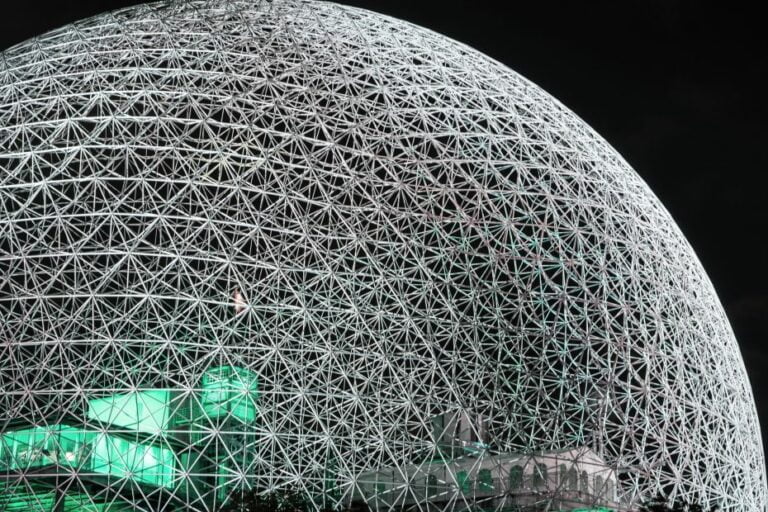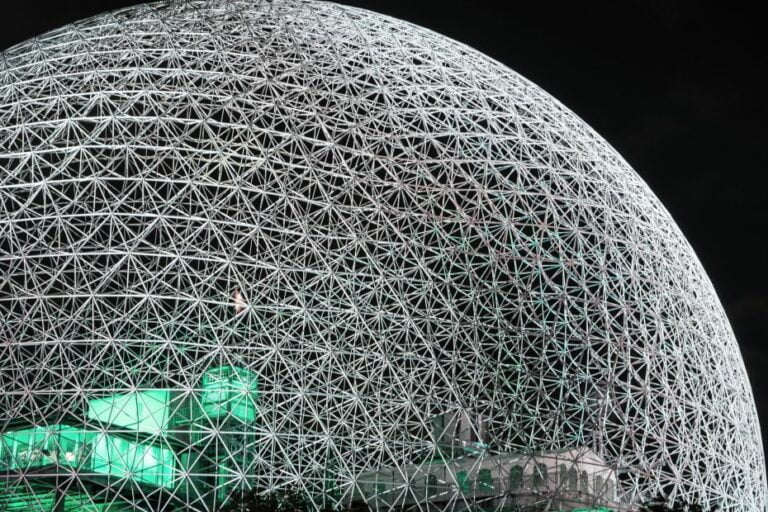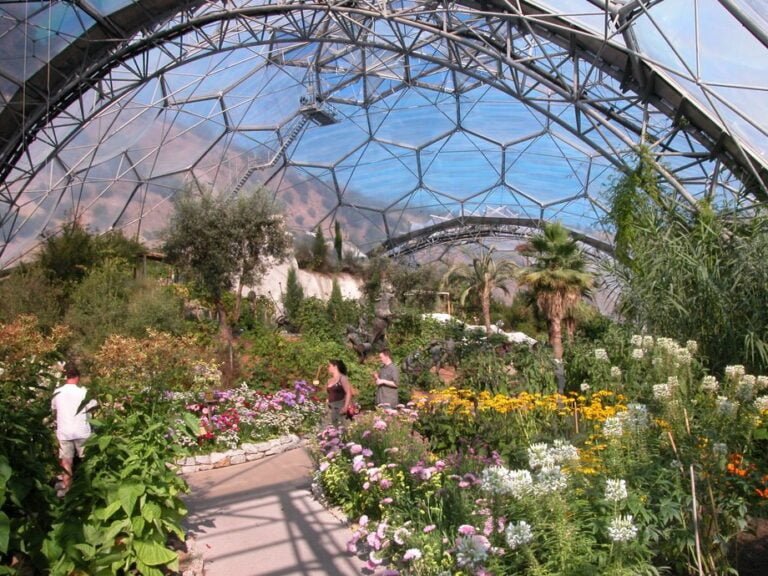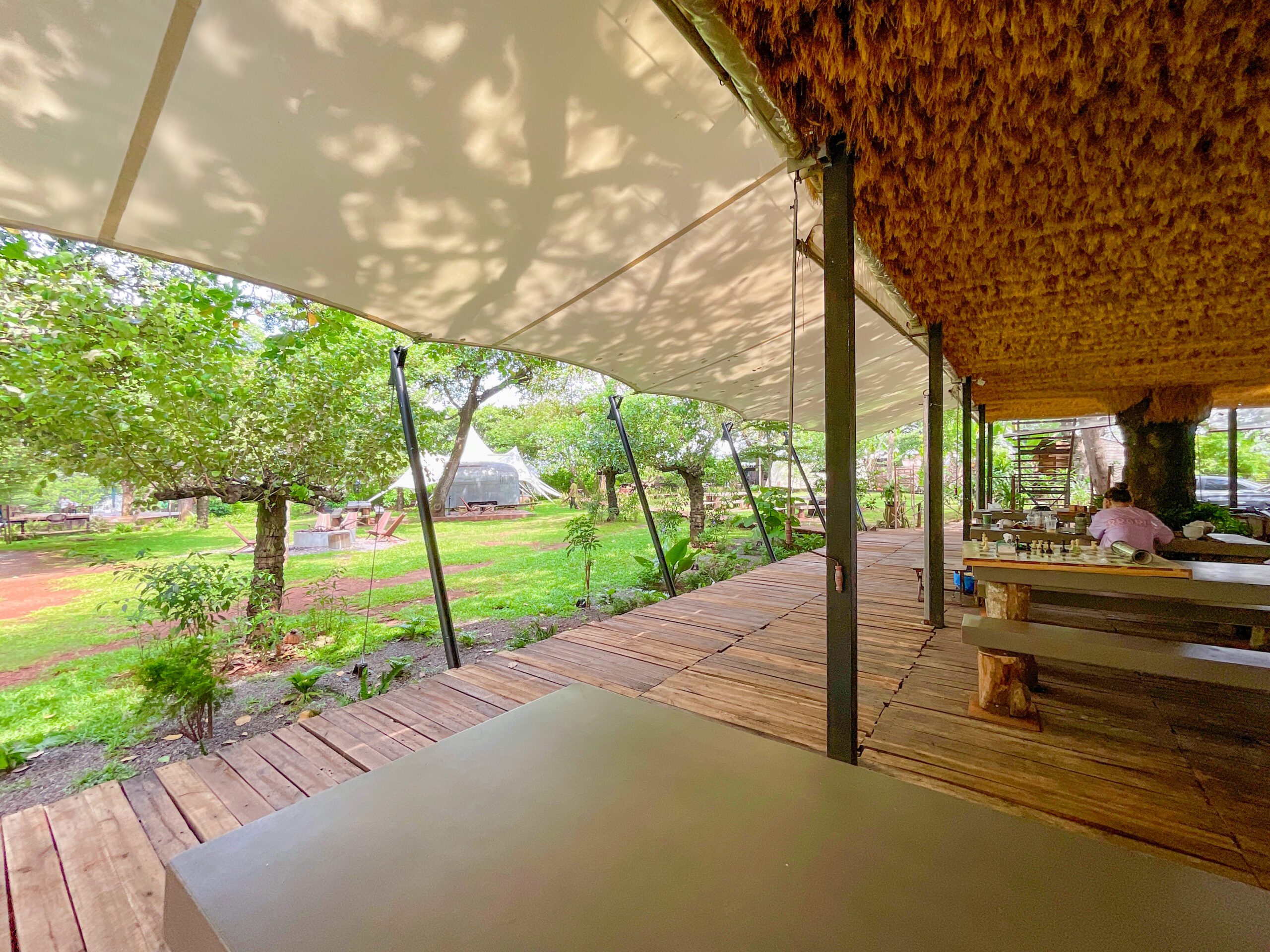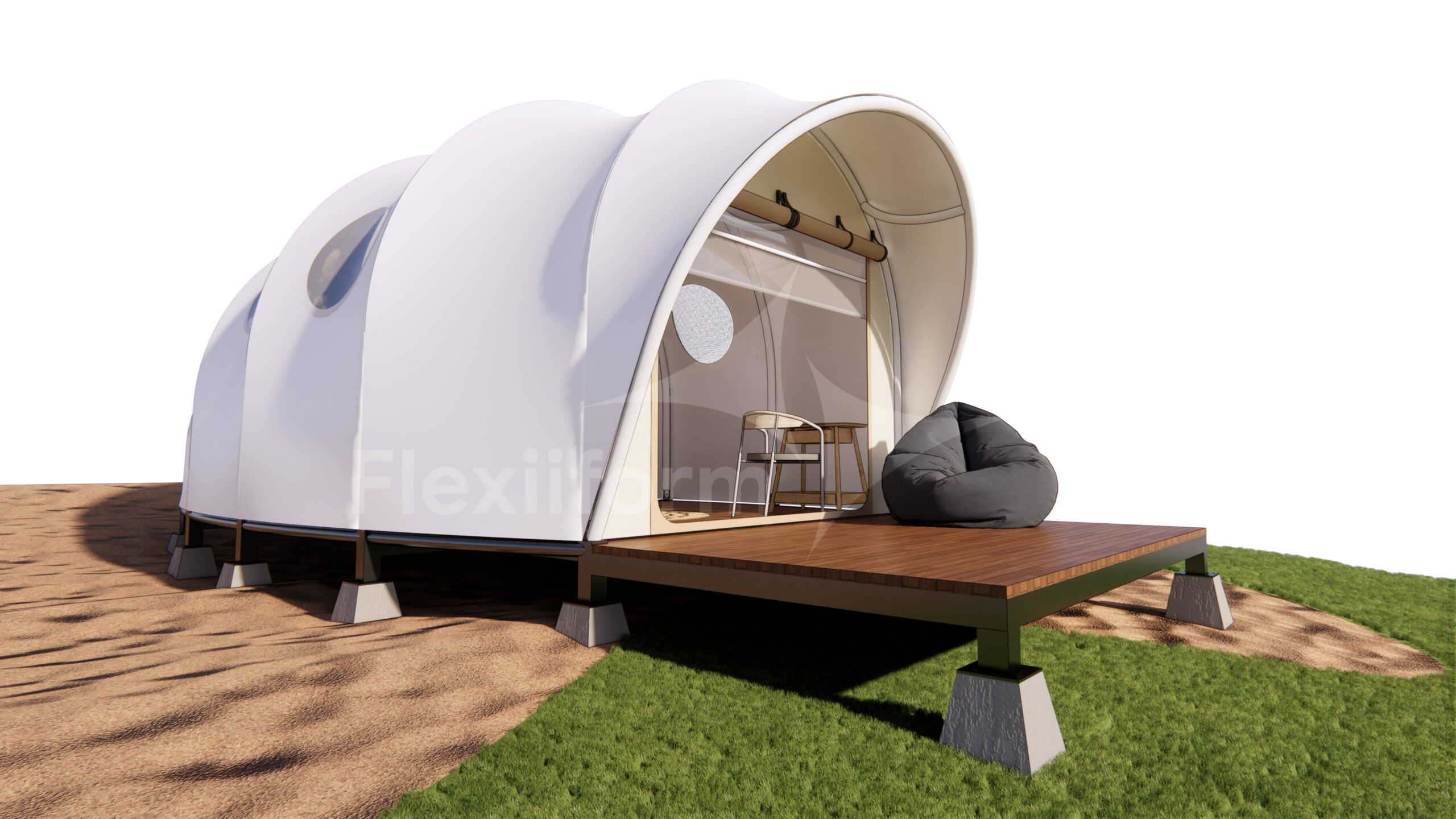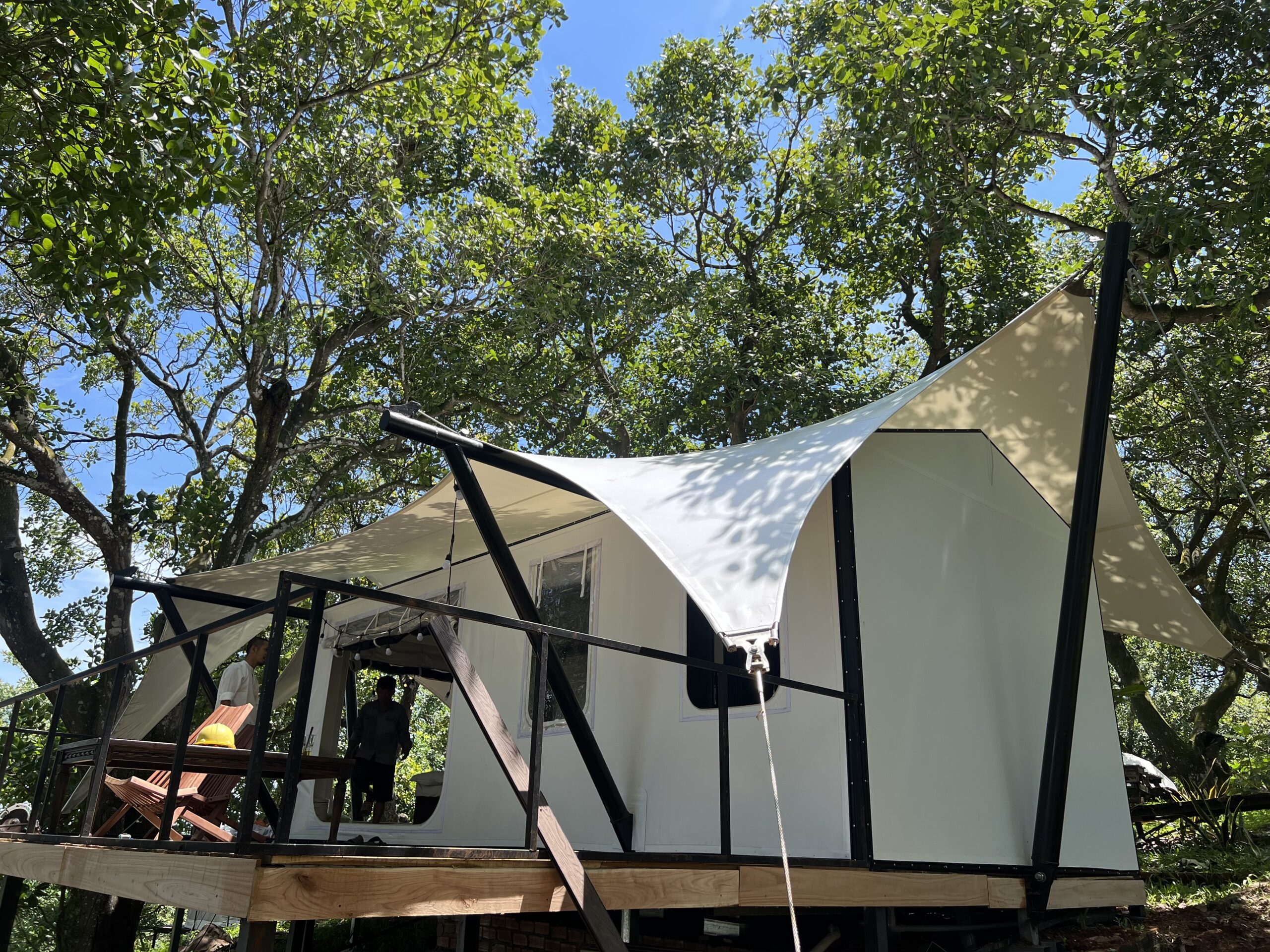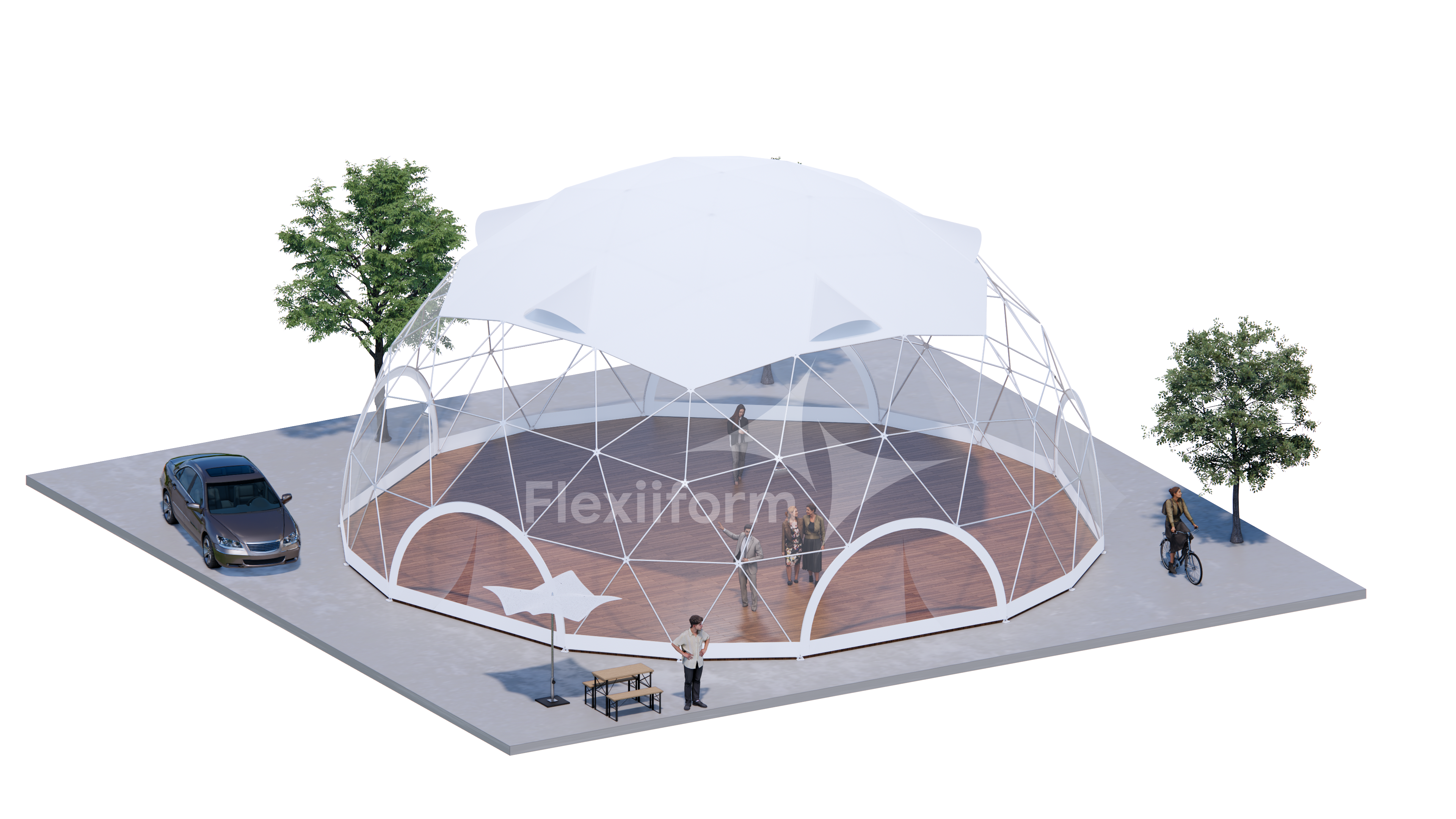Current Situation and Solution: Geodesic Dome – 3 typical projects demonstrating the applicability and sustainability of Flexiiform
Geodesic Dome is a spherical architectural structure made of straight rods connected to form triangles, creating a stable and self-supporting network. Created by the genius architect Richard Buckminster Fuller, Geodesic Dome has proven its wide applicability and outstanding durability in many large-scale projects around the world. Despite the challenges of the environment and time, these structures still exist as symbols of engineering innovation and sustainable architecture.
Technical Requirements & Context Analysis
In the context of modern architecture, the construction of large spaces, the ability to withstand extreme weather and energy efficiency is a major technical challenge. Traditional construction methods are often limited by cost, weight and the ability to create complex shapes. The need for a lightweight structure that can span large spans, optimize natural light and ventilation, and ensure absolute safety is essential. Geodesic Dome was developed as a breakthrough solution, using the principle of evenly distributing forces on the surface, allowing the creation of large spaces while ensuring stability and sustainability.
Technical Solutions and Implementation Process
Geodesic Dome solutions are implemented based on the engineering principles of spatial structures and the use of advanced materials, demonstrated through the following typical projects:
1. Geodesic Dome – Montreal Biosphere Museum (Quebec, Canada)
For the 1967 World's Fair in Montreal, Canada, the US government commissioned the genius inventor, engineer and architect Richard Buckminster Fuller to design the US pavilion. Richard Buckminster Fuller is also the creator of the Geodesic Dome, which has many applications to this day.
The Geodesic Dome’s steel frame was originally covered in a transparent acrylic, making the structure look like a giant, sparkling gem. The original plan was to dismantle the frame after the exhibition, but for budget reasons, the structure was kept and the joints were no longer bolted together but began to be welded together.
An accident occurred in 1976 when maintenance workers welded the acrylic, causing the structure to catch fire. The authorities then decided to close the place for 15 years. In June 1991, the Geodesic Dome was reborn from the ashes and became a museum dedicated to environmental activities. This time, the building did not have an acrylic coating on the outside, due to the cost of keeping the giant dome warm and also to prevent similar accidents in the future. Today, the Montreal Biosphere Museum has become a symbol of the area and attracts many visitors every year. Despite the disaster of fire and snow, Fuller's Geodesic Dome has stood the test of time and is a typical example of the solid and beautiful structure of the Geodesic Dome.
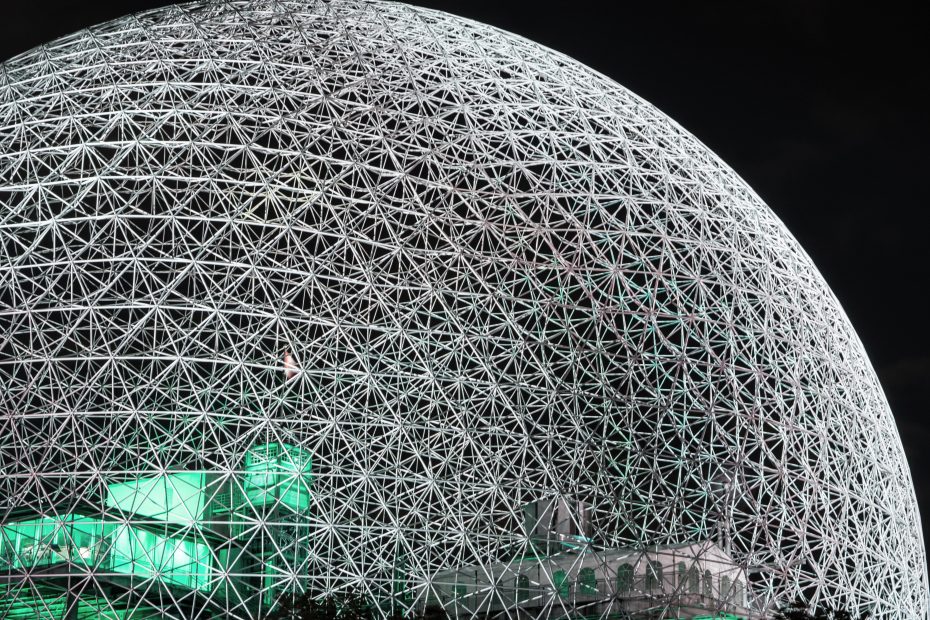
2. Geodesic Dome – Eden botanical garden project (Cornwall, England)
The Eden Botanical Garden Project is part of Eden Park, located in a valley near the city of St. Austell, Cornwall, England. It is considered the world's largest zoo and greenhouse, possessing a natural heritage of humanity, with typical biological communities around the world.
Located along the winding, flower-filled roads are greenhouses with unique Geodesic Dome architecture, covered with ETFE (Ethylene Tetrafluoroethylene) tarpaulin. 2 layers of ETFE tarpaulin are pressed together and inflated with air inside, helping the greenhouse to insulate very effectively. In addition, ETFE also has the ability to transmit light like glass, combined with anti-fouling and self-cleaning features when it rains, making the greenhouses of the Eden Project both beautiful and convenient, efficient and safe. If you are a nature lover and love to explore, the Eden Botanical Garden Project is a place not to be missed in your life.
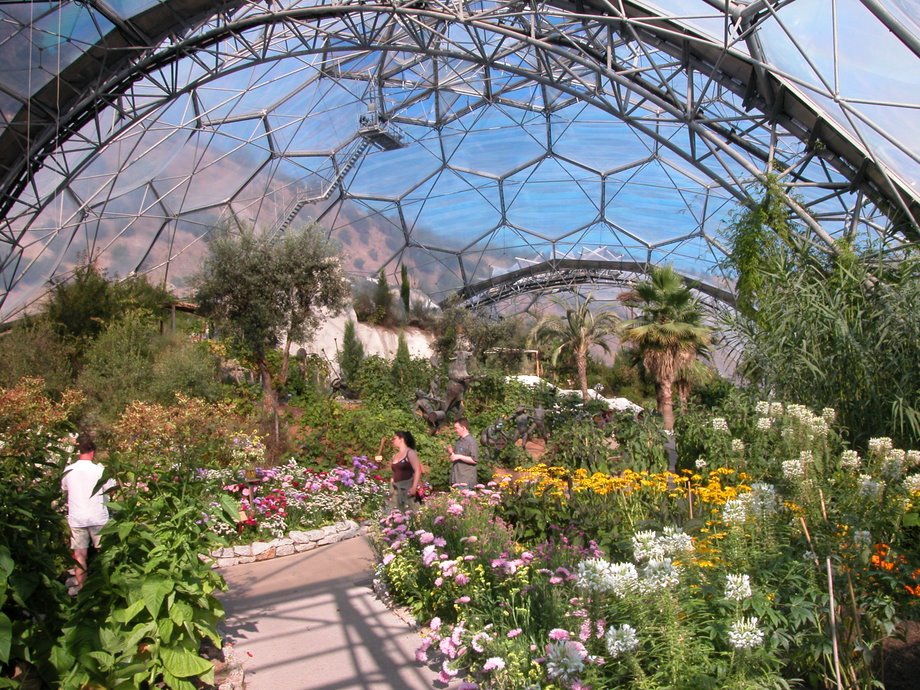
3. Desert Dome (Nebraska, USA)
The Geodesic Dome in Omaha, Nebraska, USA houses an entire desert inside and was recognized by the Guinness World Records in 2009 as the world's largest indoor desert. The Desert Dome officially opened in April 2002 at a construction cost of $31.5 million. Similar to the purpose of the Eden Project, the Desert Dome is home to the world's most diverse desert flora and fauna, from the Namib Desert of South America, the Sonora Desert of Mexico, and the Red Desert of Australia.
At 25,603 square metres, the Desert Dome is not only one of the world’s largest indoor deserts, but its Geodesic Dome is also the world’s largest acrylic geodesic dome. The dome is 42 metres high and 70 metres in diameter, with 1,760 triangles. These panels have varying degrees of translucency to create shade in the summer and increase natural light in the winter for maximum energy savings.
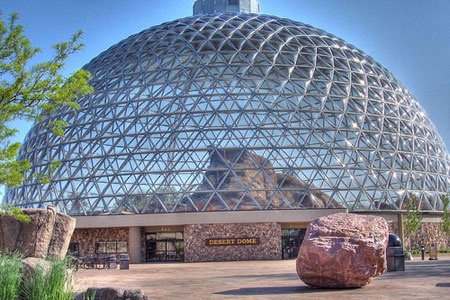
Results and Performance Evaluation
Notable Geodesic Dome projects such as the Montreal Biosphere Museum, Eden Botanical Garden and Desert Dome have demonstrated the superior effectiveness of this structure in creating large, sustainable and environmentally friendly spaces:
- Timeless Durability: Despite facing disasters from fire and super blizzards, Montreal architect Fuller's Geodesic Dome has survived, proving the structure's stability and resilience.
- Energy efficiency and environmental control: The use of ETFE material at Eden Botanical Garden shows effective insulation and optimal light transmission, helping to maintain an ideal living environment for plants. Similarly, the Desert Dome has optimized light and shade to save energy.
- Versatile Applications: From museums, botanical gardens to indoor deserts, Geodesic Dome demonstrates great versatility in meeting various architectural and functional requirements.
These projects are clear evidence that Geodesic Dome is not only a beautiful architectural solution but also an advanced, sustainable and efficient engineering choice for the future.
Contact Technical Consulting
Flexiiform is proud to be one of the leading units in Vietnam providing solutions for designing and constructing tensioned canvas. The predecessor of FasTech company, Flexiiform team gathers experts with over 10 years of experience in the industry and a team of consultants providing solutions according to the requirements for a variety of models and projects at home and abroad.
To learn more about our services and products, or for expert advice on Geodesic Dome solutions and other tensile structures, please contact:
Flexiiform Company Limited
Website: https://flexiiform.vn/
Phone: +84 867 868 830
Fanpage: FlexiiForm Fanpage
Email: [email protected]


